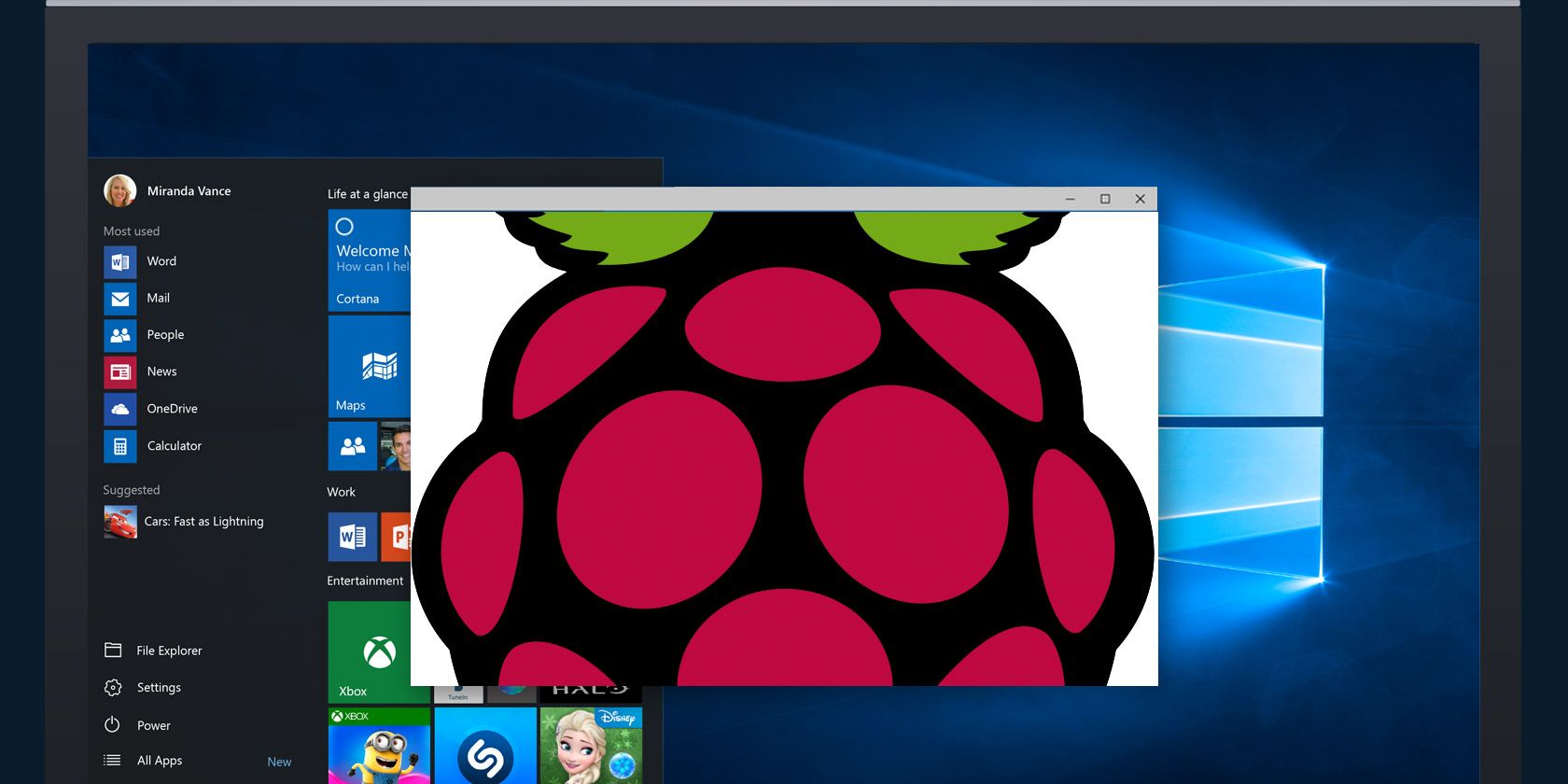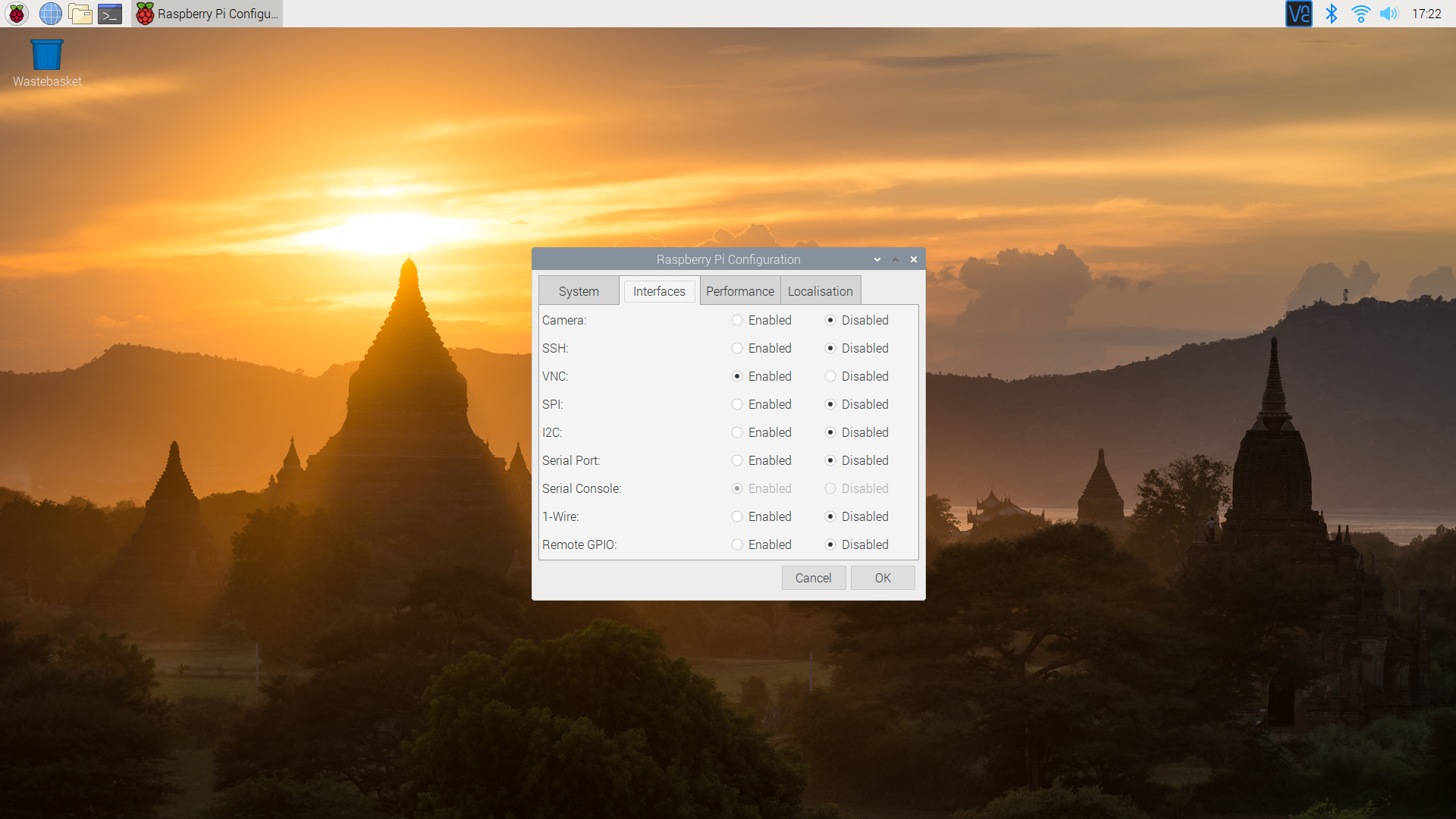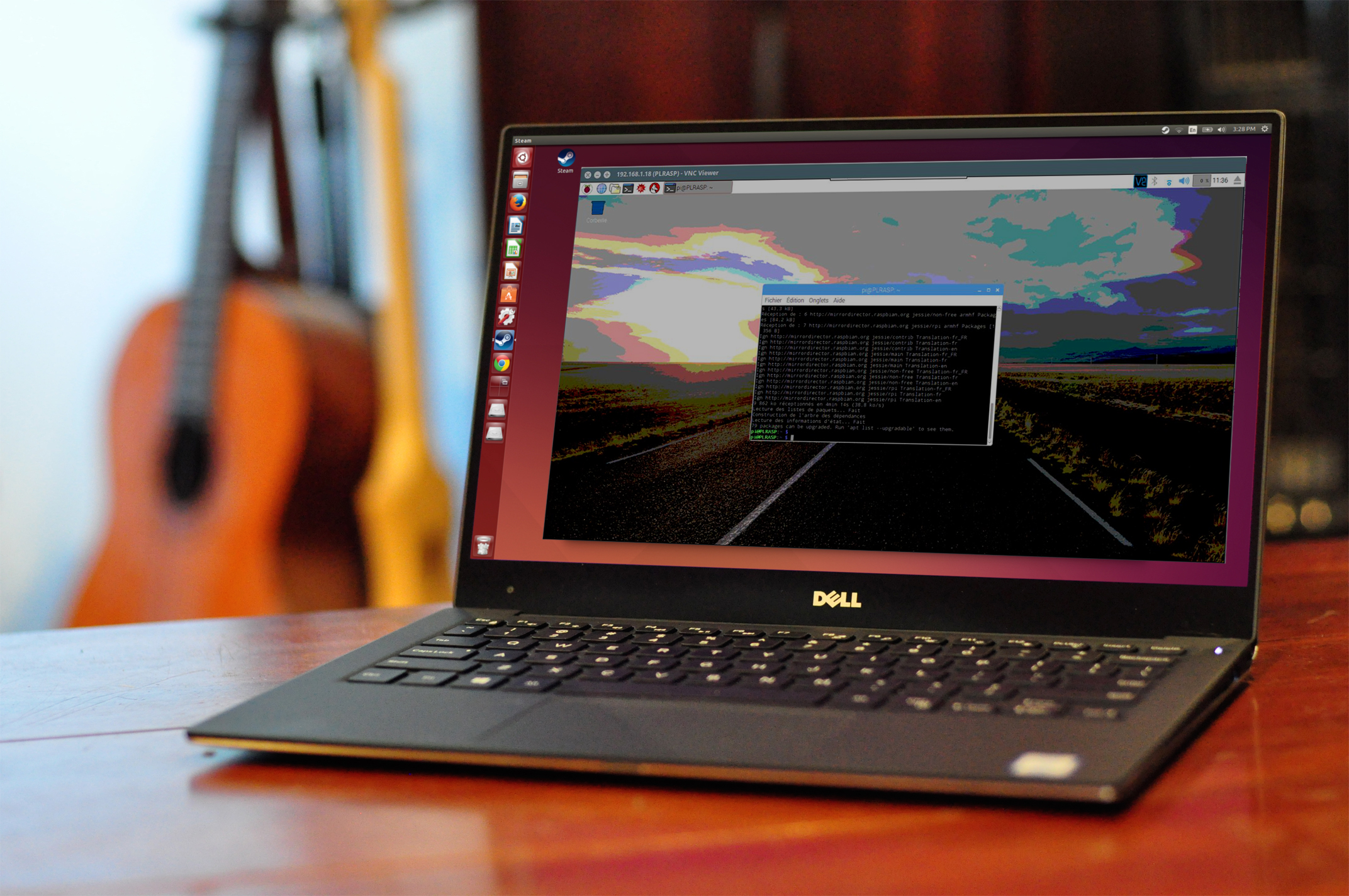IoT Remote VNC Raspberry Pi Download - Get Connected
Ever thought about checking in on your gadgets from a distance, maybe even from across town or another country? That idea of having your physical things, like home appliances or little computers, talk to each other and let you peek in on them, is what a lot of folks call the Internet of Things, or IoT for short. It's about devices being able to share what they are doing and what they see, almost like they have their own little conversations without you having to be right there. You know, it's pretty neat how all these bits of tech can link up.
When we talk about something like a Raspberry Pi, which is a tiny computer, it fits right into this IoT picture. People often use these small machines for all sorts of projects, from smart home setups to little robots. But what if you set up your Raspberry Pi somewhere, and you want to see what it's doing or change something on it, but you don't want to physically plug in a keyboard and screen every single time? That's where getting access to it from afar, perhaps through something like VNC, becomes really useful, and it's something many people look into.
So, the idea of getting an **IoT remote VNC Raspberry Pi download** is about putting all these pieces together. It's about setting up your tiny computer so you can control it, see its screen, and work with it as if you were sitting right in front of it, even when you are miles away. This kind of setup means you have a lot more freedom with where you put your projects and how you manage them, which is, you know, pretty handy for anyone tinkering with electronics.
- Exploring The Wealth Of Lisa Hogan An Insight Into Her Net Worth
- Exploring The Family Life Of Keith Urban And His Children
- Exploring The Iconic Trading Places Film Cast
- Unveiling The Legacy Of The American Singer Prince
- Stana Katic Baby A New Chapter In The Stars Life
Table of Contents
- What is IoT Anyway?
- How Does Raspberry Pi Fit with IoT?
- What is VNC for Remote Access?
- Why Think About IoT Remote VNC Raspberry Pi Download?
- Keeping Your IoT Remote VNC Raspberry Pi Safe
- Common Things to Know About IoT Remote VNC Raspberry Pi Setups
- Troubleshooting Your IoT Remote VNC Raspberry Pi Connection
- Final Thoughts on IoT Remote VNC Raspberry Pi Access
What is IoT Anyway?
Many people wonder what the Internet of Things, or IoT, actually means. Well, it's a way of describing how everyday physical items, like your refrigerator, a security camera, or even a vehicle, can be linked up. These items have little bits of computer code and sensing parts inside them, and they can send information to each other or to a central place over the internet. So, it's about things being able to connect and share data without needing a person to do it for them, which is, you know, pretty cool.
Think of it like this: your coffee maker could talk to your alarm clock, and when the alarm goes off, the coffee maker starts brewing. This happens because both devices have tiny computer brains and ways to connect to a bigger network. They collect information about their surroundings or their own status and then share that information. This sharing of data allows for actions to happen without you having to push buttons. It's really about making the physical world a bit more digital and responsive, you know, in a quiet sort of way.
An IoT setup typically has a few main parts. There are the smart devices themselves, which are the physical objects that can collect and send information. Then there's the way they connect, usually through the internet. And then there's a place where all that information goes, like a cloud storage system, where it can be looked at or used to make things happen. So, basically, it’s about physical things having a digital voice and ears, which is quite something, in a way.
- Celebrating Love Jep Robertsons Daughters Wedding
- Unraveling The True Story Of John Creasy
- Unveiling The Life Of Barry Statham From Action Star To Cultural Icon
- Exploring The Life Of Uma Thurmans Daughter A Journey Of Creativity And Talent
- Rediscovering The Charm Of Andy Griffith And The Darlings
The idea behind IoT has been around for a while, with the term itself being thought up by a computer expert named Kevin Ashton some time ago. The whole point is to let things interact with very little help from people. They gather facts about their environment and swap those facts with other connected items. This means that a lot of routine tasks can happen on their own, making life a little smoother for us, which is, like, the whole point.
How Does Raspberry Pi Fit with IoT?
The Raspberry Pi is a small computer, about the size of a credit card, that people use for all sorts of projects. It's quite popular with those who like to tinker and build things, and it's especially good for IoT projects. Because it's so small and doesn't cost a lot, you can put it almost anywhere. This makes it a great choice for devices that need to sense things or control other parts of a system, like in a smart home or a weather station. It's really quite versatile, you know.
When you use a Raspberry Pi in an IoT project, it acts like the brain of your device. It can gather information from sensors, like temperature or light levels, and then send that information over the internet. Or, it can receive commands from you, perhaps through a phone app, and then tell another part of your project what to do, such as turning on a light. It's a very flexible tool for making physical things respond to digital instructions, and that's a big part of what IoT is all about, so.
Many people find the Raspberry Pi easy to get started with, even if they are new to coding or electronics. There are lots of guides and communities online that can help you learn. This ease of use, combined with its small size and power, makes it a go-to for hobbyists and even some businesses looking to create their own connected devices. It’s a pretty neat piece of kit for anyone wanting to build something that talks to the internet, you know.
What is VNC for Remote Access?
VNC stands for Virtual Network Computing. It's a way for you to see and control a computer screen from another computer, even if they are far apart. Think of it like this: you're sitting at your desk, but you can see the screen of your Raspberry Pi that's in another room, or even another building, and you can move its mouse and type on its keyboard as if you were right there. This kind of remote access is super helpful when you have a computer, like a Raspberry Pi, that doesn't have its own screen or keyboard hooked up all the time. It's very convenient, actually.
The way VNC works is that it sends the picture of the remote computer's screen to your computer, and then it sends your mouse and keyboard actions back to the remote computer. This means you get a live view and full control. It's a bit like having a window into another machine. This is especially handy for managing devices that are placed in hard-to-reach spots or if you simply want to check on something without having to physically go to it. It really helps with managing things from a distance, you know.
There are different programs that use the VNC idea, and some are free to use while others you might pay for. They all generally do the same thing: give you a way to see and use a computer's desktop from somewhere else. For someone working with small computers like the Raspberry Pi, VNC is a common choice because it lets you set up your Pi without needing to keep a monitor and keyboard attached to it all the time. This makes your IoT projects much tidier and easier to manage, in a way.
Why Think About IoT Remote VNC Raspberry Pi Download?
So, why would someone want to get an **IoT remote VNC Raspberry Pi download**? Well, imagine you've set up a little weather station in your garden using a Raspberry Pi. You want to check the readings or maybe change how often it sends data. Instead of going outside, bringing in the Pi, plugging in a screen, and making your changes, you can simply open up a VNC program on your laptop or phone. This lets you see the Pi's desktop and make changes from the comfort of your couch. It really saves a lot of back and forth, you know.
Another reason is for projects that need to run all the time without much human interaction. If your Raspberry Pi is controlling a smart light system or monitoring something in your home, you might only need to check on it occasionally. With VNC, you can quickly log in, see if everything is working as it should, and then log out. This means your Pi can keep doing its job without being disturbed, and you still have a way to keep an eye on it. It’s pretty useful for those kinds of setups, actually.
For those who are learning about programming or Linux, having remote access to a Raspberry Pi through VNC can also be a big help. You can write code on your main computer and then easily switch to the Pi's desktop to test it out. This makes the learning process smoother and more enjoyable, as you don't have to keep moving between different physical setups. It's a good way to work with your projects, so.
Getting Started with Your IoT Remote VNC Raspberry Pi
If you are thinking about setting up **IoT remote VNC Raspberry Pi** access, the first step is usually to get your Raspberry Pi up and running with its basic operating system. This is often a version of Linux made for the Pi, called Raspberry Pi OS. You'll need to put this system onto a small memory card, which then goes into the Pi. This is the very first thing to do before you can even think about remote control. It's the foundation, you know.
Once the operating system is on the memory card and the Pi is powered on, you'll want to make sure it can connect to your home network, either with a cable or wirelessly. This connection is how your VNC program will find and talk to your Raspberry Pi. Without a network connection, the remote access just won't work. It’s a pretty basic step, but a very important one, too, it's almost.
After that, you'll need to enable a special setting on your Raspberry Pi that lets VNC connections happen. This is usually a simple toggle in the Pi's settings menu. It tells the Pi to be ready to accept a connection from another computer that wants to see its screen. This step is what makes the whole VNC idea possible for your tiny computer. It’s something you can usually find quite easily, you know.
Setting Up VNC for Your Raspberry Pi IoT Project
When you are ready to set up VNC for your **Raspberry Pi IoT project**, you will typically need to install a VNC server program on the Raspberry Pi itself. This program is what creates the "screen" that gets sent over the network. There are a few different VNC server options you can pick from, and many people find that one called RealVNC Connect works well, as it's often already included or easy to get for the Raspberry Pi. You know, it's pretty common.
After the VNC server is on your Raspberry Pi, you'll then need a VNC client program on the computer or device you want to use for controlling it. This could be your laptop, desktop, or even a tablet or phone. This client program is what receives the screen picture and sends your mouse and keyboard actions. You just type in the address of your Raspberry Pi, and if everything is set up right, you should see its desktop appear. It's quite a neat trick, in a way.
Sometimes, you might need to adjust some settings on your network router to allow VNC connections to come in from outside your home. This is often called "port forwarding" and it helps direct the VNC traffic to your Raspberry Pi. If you only plan to use VNC from within your home network, you might not need to do this. But for true remote access from anywhere, it's a step that many people consider. It helps make sure the connection can get through, you know.
Keeping Your IoT Remote VNC Raspberry Pi Safe
When you open up your **IoT remote VNC Raspberry Pi** to be controlled from a distance, it's important to think about keeping it safe from unwanted visitors. Just like you wouldn't leave your front door unlocked, you don't want to leave your Raspberry Pi open for anyone to get into. The first thing to do is make sure you have a strong password for your VNC connection and for your Raspberry Pi itself. A strong password means one that's hard for others to guess, maybe with a mix of letters, numbers, and symbols. It’s pretty important, actually.
Another good idea is to keep the software on your Raspberry Pi up to date. Software makers often release updates that fix holes or weaknesses that could be used by people with bad intentions. By updating regularly, you help close those potential entry points. It’s like putting new locks on your doors when the old ones start to wear out. This helps keep your setup more secure, you know.
If you are setting up your VNC connection to be accessed from anywhere on the internet, you might also look into using something called a VPN, or Virtual Private Network. A VPN creates a private, secure path over the internet, making it much harder for others to snoop on your connection or try to break in. This adds an extra layer of protection, which is something many people consider for truly remote access. It’s a good step for peace of mind, you know.
Common Things to Know About IoT Remote VNC Raspberry Pi Setups
When you're dealing with **IoT remote VNC Raspberry Pi** setups, you might find that the speed of your internet connection plays a big part in how well VNC works. If your internet is slow, the screen updates might be delayed, making it feel sluggish. A faster connection means a smoother experience, with the screen updating almost instantly. It’s something to keep in mind if things feel a bit slow, you know.
Also, sometimes you might notice that the colors or picture quality through VNC aren't as good as if you were looking at the screen directly. This is because VNC tries to save on data by sometimes sending a less detailed picture. You can often adjust these settings in your VNC client to get a better picture, but it might use more internet data. It’s a trade-off that many people consider. You know, it's just how it works.
Another thing to be aware of is that if someone is already using the Raspberry Pi with a physical keyboard and mouse, your VNC connection might interfere with what they are doing, or vice versa. VNC is generally for one person to control the desktop at a time. So, if your Pi is in a shared space, it’s something to think about. It’s pretty much a single-user experience for the desktop, you know.
Troubleshooting Your IoT Remote VNC Raspberry Pi Connection
If your **IoT remote VNC Raspberry Pi** connection isn't working, there are a few common things to check. First, make sure your Raspberry Pi is actually turned on and connected to the network. Sometimes, a simple power cycle or checking the network cable can fix things. It’s a pretty basic first step, but often overlooked, you know.
Next, double-check the network address you are using to connect to your Raspberry Pi. If the address has changed, your VNC client won't be able to find it. You can usually find the Pi's current address by plugging it into a screen and typing a command. This is a very common reason for connections not working. It's something to definitely look at, so.
Also, make sure the VNC server program is running on your Raspberry Pi and that the VNC setting is enabled. If the server isn't active, there's nothing for your client to connect to. Sometimes, a program might
- Vicente Fernandez Sisters A Glimpse Into The Lives Of The Iconic Singers Family
- Unveiling The Wealth Of Yasmine Bleeth A Look At Her Net Worth
- Unveiling The Secrets In Search Of Relic First Descendant
- Unraveling The Professional Lives Of Taylor Swifts Parents
- Unveiling The Life Of Rebecca Muir A Journey Through Heritage And Passion

How to Run a Remote Desktop on Raspberry Pi with VNC

VNC: Remote access a Raspberry Pi — Raspberry Pi Official Magazine

Remote control your Raspberry Pi from your PC with VNC! – Howto